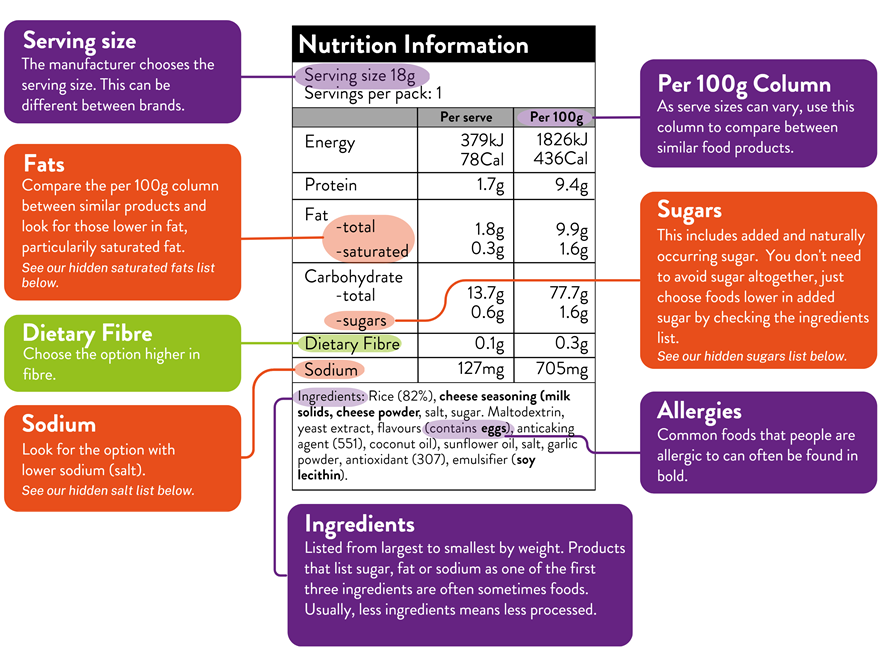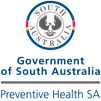How to Read Food Labels
Reading food labels is a great way to choose healthier products but it can be confusing. Be wary of nutrition claims on the front of the pack (e.g. “source of vitamins and minerals”) and instead use this guide to help you read the nutrition information panel on the packaging.

A note on Health Star Ratings
The Health Star Rating found on the front of some packaged products can help you compare similar foods. They range from ½ a star to 5 stars - the more stars, the healthier the choice when comparing items within the same food category. For example, when comparing a savoury biscuit to another savoury biscuit, not when comparing a savoury biscuit to a yoghurt. Products lose stars if they are higher in saturated fat, sugar and salt, and gain stars if they are higher in dietary fibre, protein, calcium, or other vitamins and minerals.
Alternate Names for Ingredients
|
Other names for ingredients high in saturated fat: |
|
|
Other names for added sugar: |
|
| Other names for high salt ingredients: • Baking powder • Celery salt • Garlic salt • Meat/yeast extract • Monosodium glutamate (MSG) • Onion salt • Rock salt • Sea salt |
|



